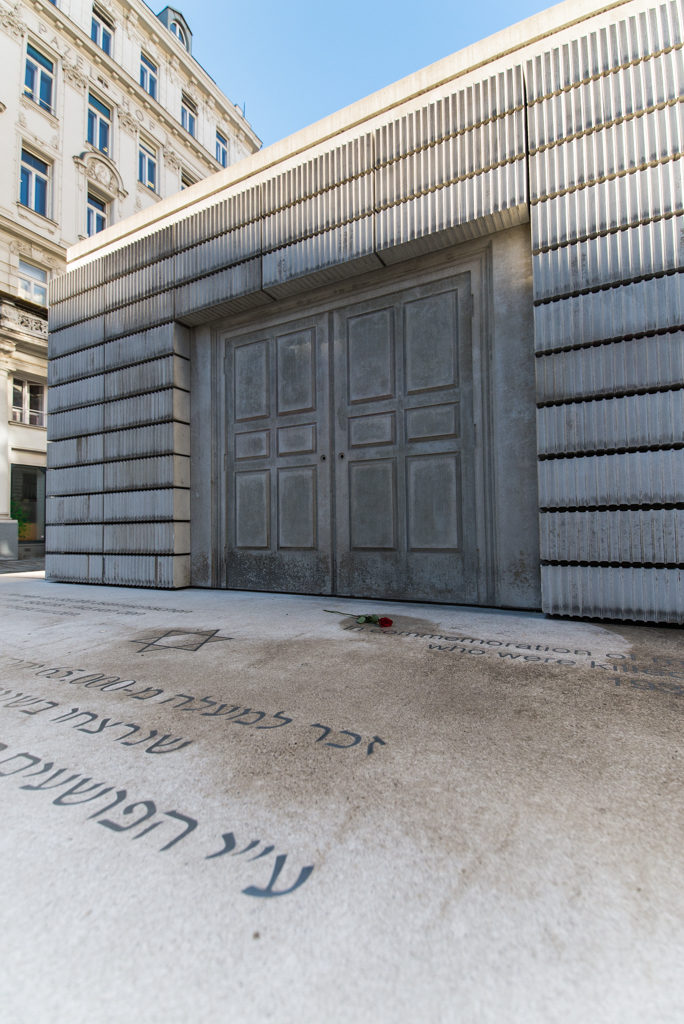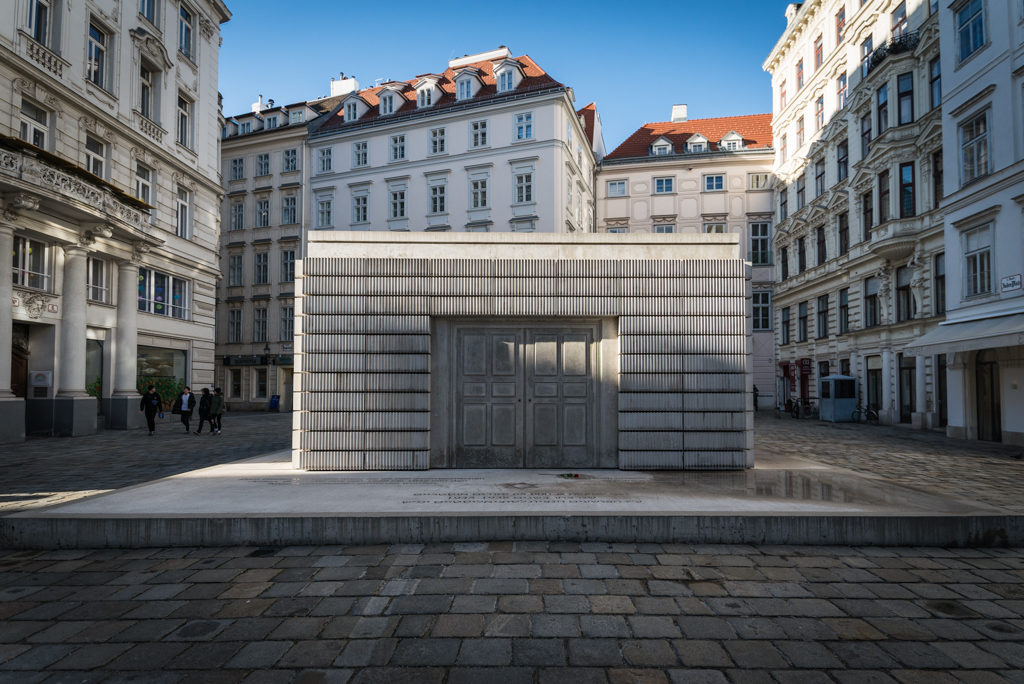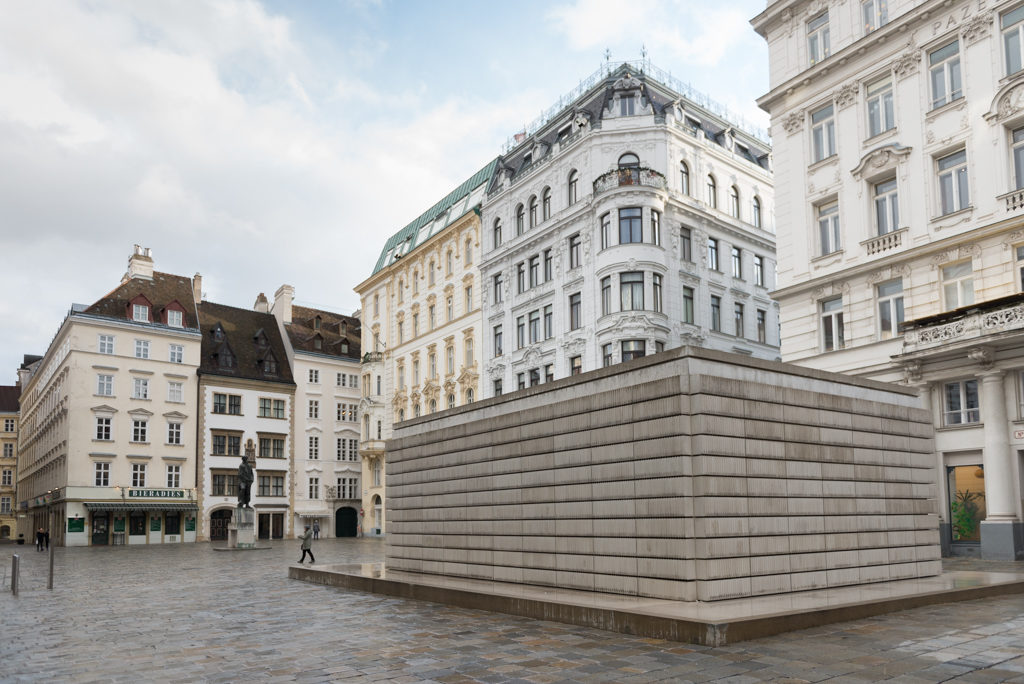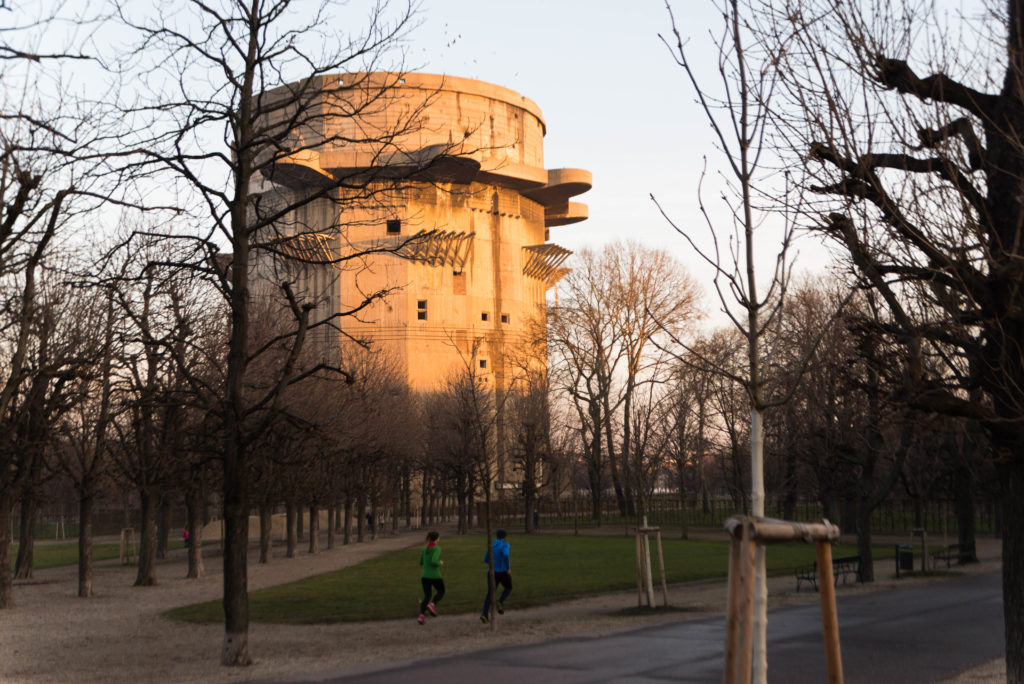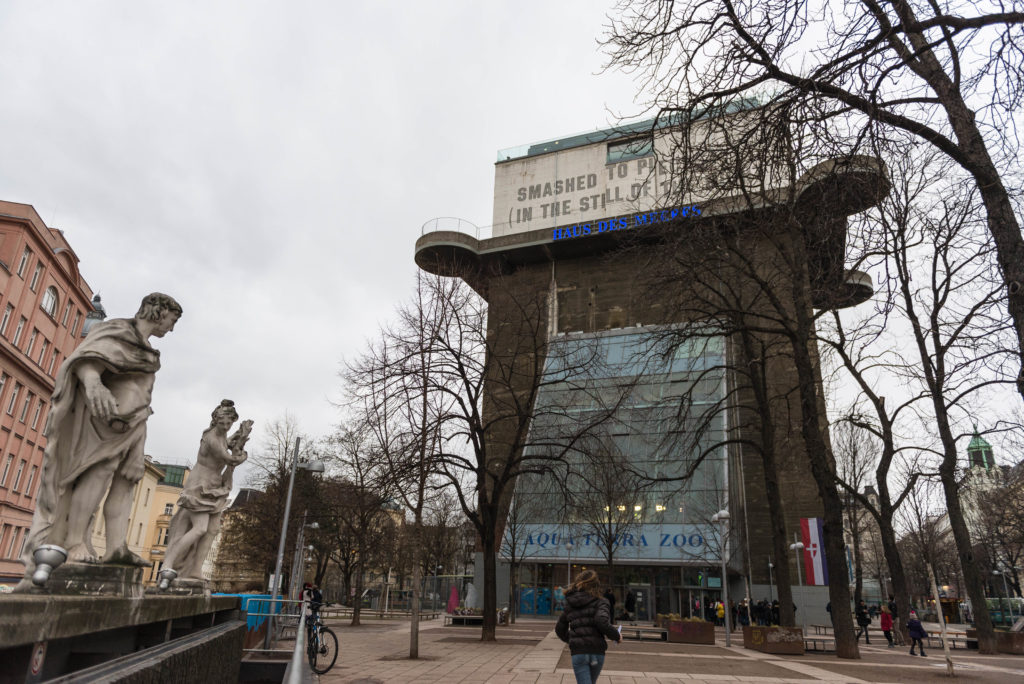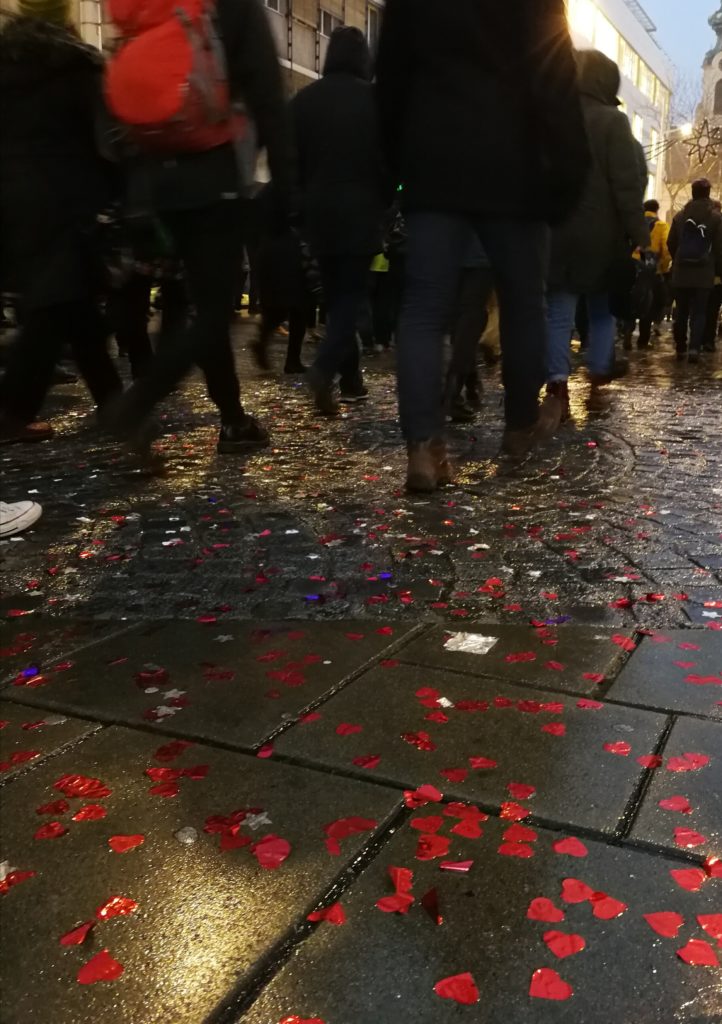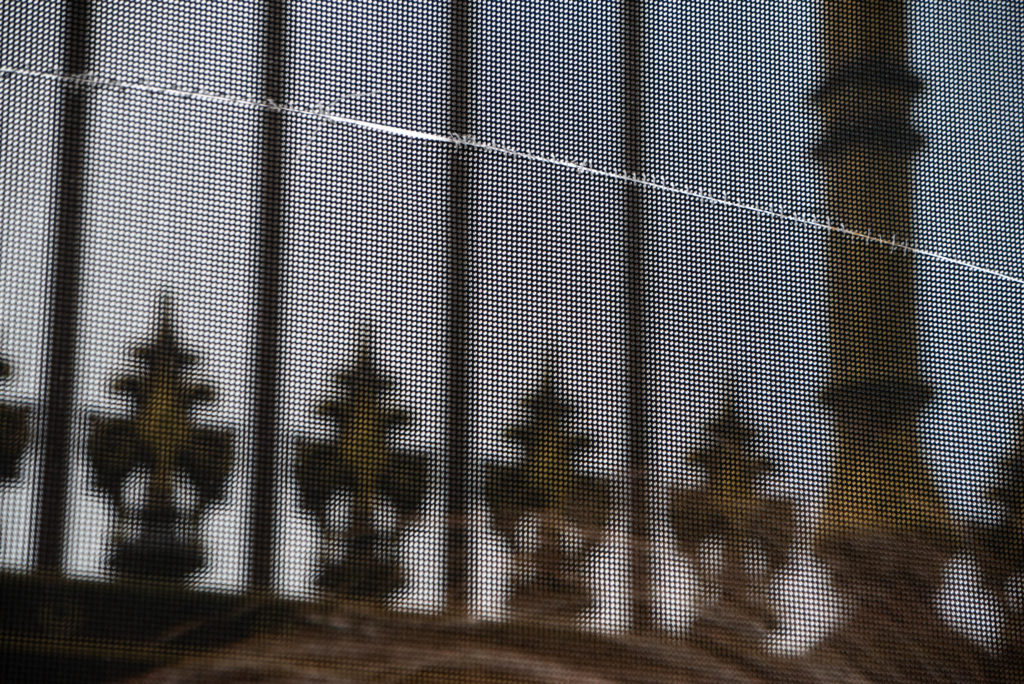
Vienna has many faces. One very beautiful. The city, peacefully slow yet vibrantly social-democratic, has scored the top ranking as the world’s most livable city for the past ten years (Mercer Quality of Living City Ranking). One very ugly: Stained and scarred by history: fascism, the holocaust and the loss of the city’s Jewish community.
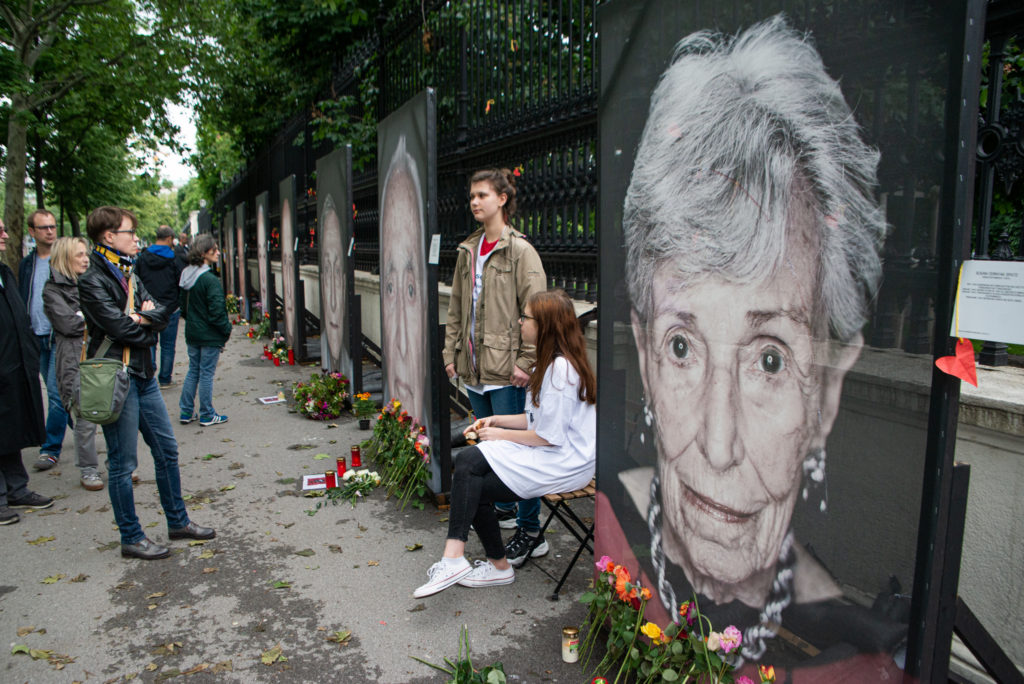
Vienna counts almost two million faces – plus 90. Italian-German photographer Luigi Toscano has mounted 90 larger than life current portraits of holocaust survivors at Vienna’s picturesque main boulevard, the Ringstraße, an avenue that features the architectural splendor of the old city. The collection of photos, printed on water repellent, slightly transparent canvas, has toured 70 countries to commemorate the past: Lest we Forget! in times of resurgent totalitarianism, xenophobia and right wing extremism worldwide.
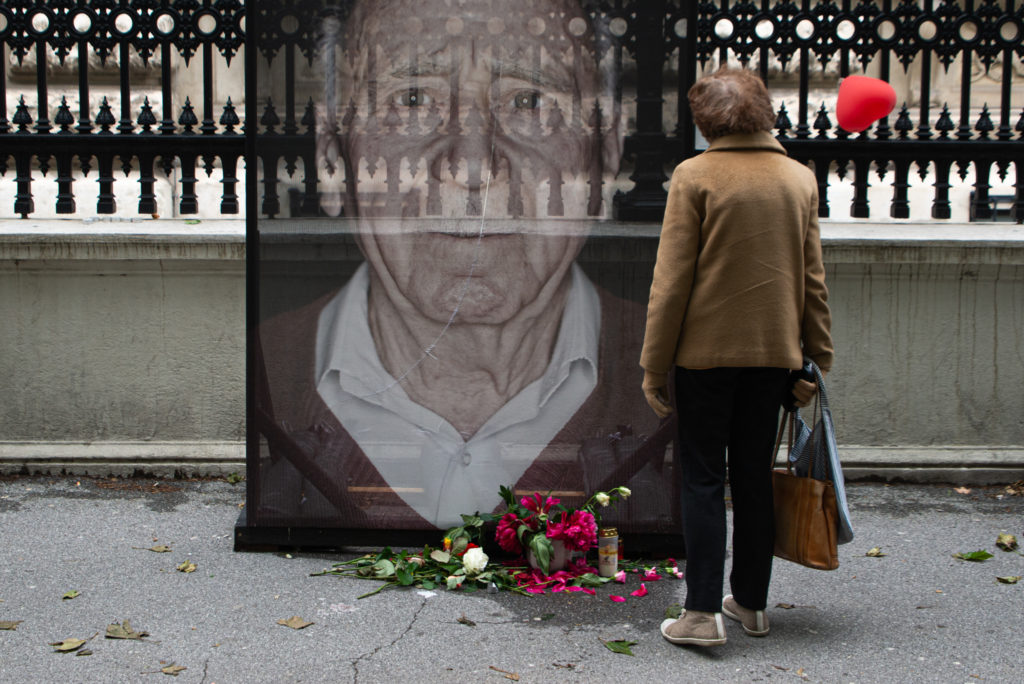
But it was only in Vienna that the photos – touching close-ups of aged, wrinkled faces, eyes that 80 years after the fact still reflect the horrors of the Nazi concentration camps, the sadness of the being orphaned and unrooted, and even the optimism and love of reconciliation – were vandalized: defaced and slashed with swastikas.
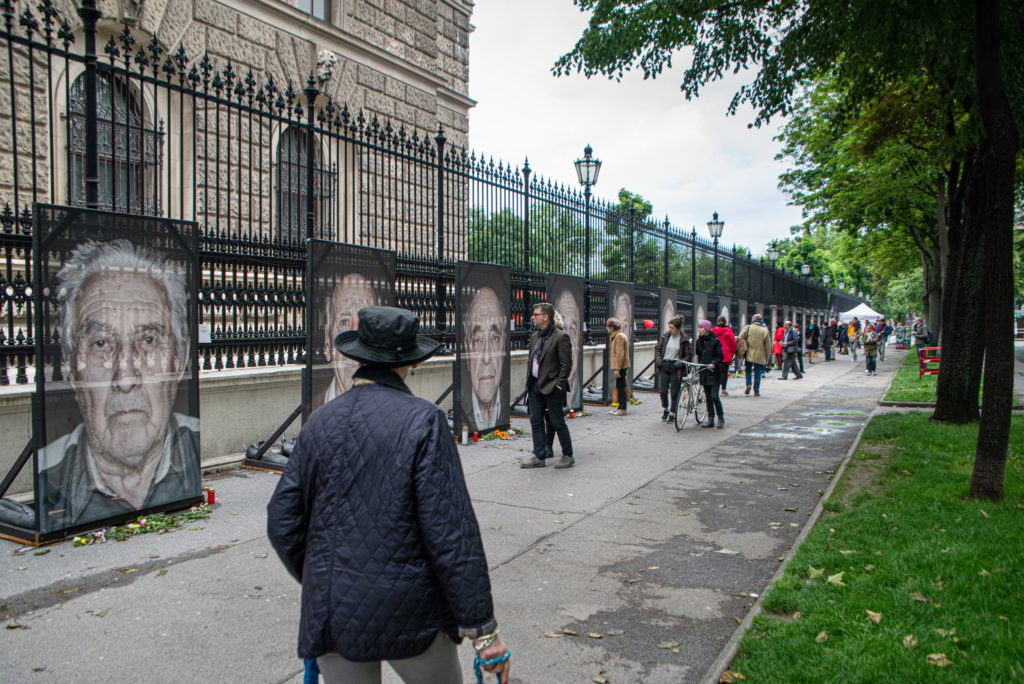
Toscano’s outdoors exhibition, free and accessible to anyone, has arrived in Vienna in the midst of a political scandal. Until last week, Austria was governed by a coalition between the neo-liberals and the right wing party . The former, whose young chairman Sebastian Kurz eerily resembles the young Emperor Franz Joseph II, husband of Sissy and erector of the Ringstrasse, mastered marketing and political staging to the perfection, hence becoming strongest force in Austria. The latter not so: A video surfaced depicting the right wing leaders drugged and in the act of instigating corruption. A week and a parliamentary motion of no-confidence later, the coalition was history. The act of vandalism, it is suspected, was an act of frustration, hate and antisemitism, which the government had encouraged.
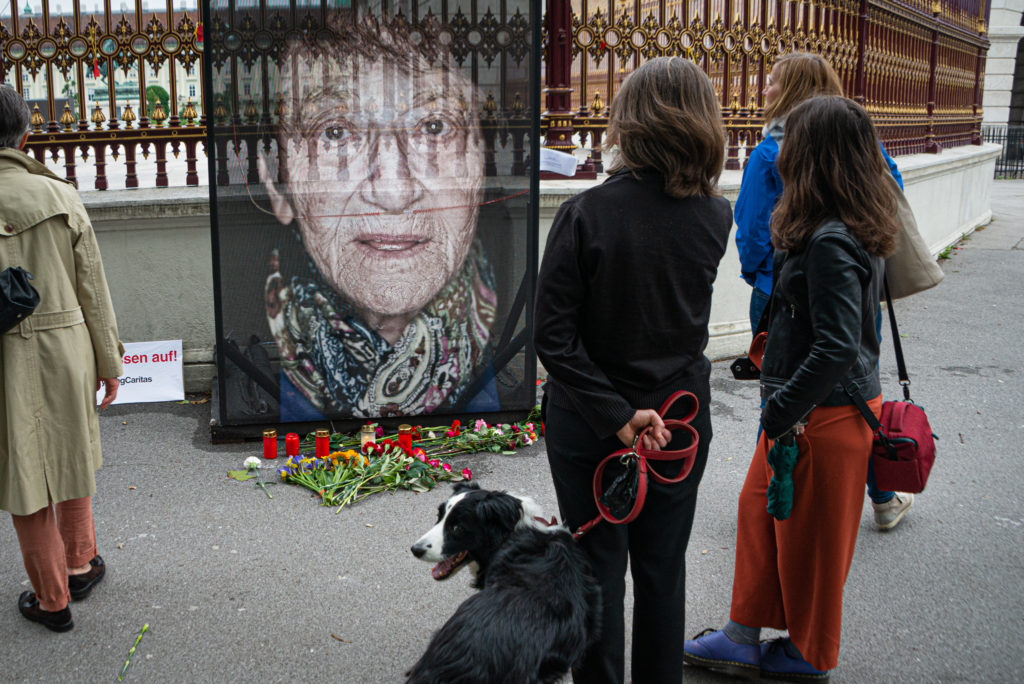
The destruction of the portraits came as a shock to everyone. Another shameful mark in the history of Vienna. But it’s from the dark that the sun rises. Viennese spontaneously got together at Ringstraße, brought needles and threads and sewed the torn portraits back together. Vigils are held to protect the photos 24/7, flowers laid, candles lit. Vienna has learned from its history, it seems.
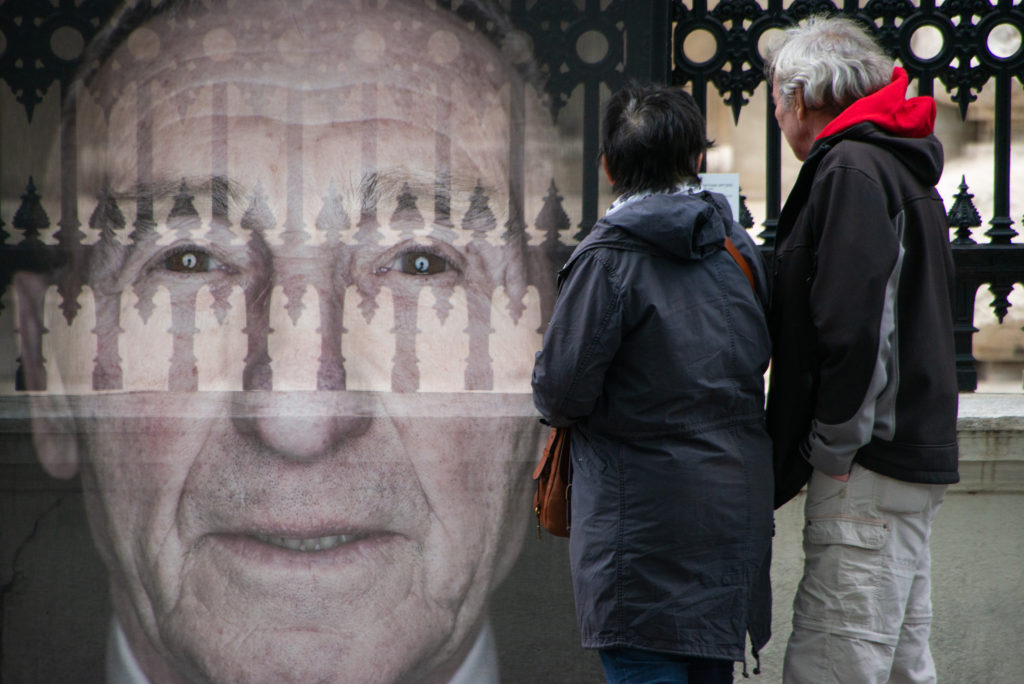
Who are these faces who stand the rain, the wind and the cold to keep watch? It’s the young Catholics. It’s the Boy scouts. It’s the Young Muslims, who sit feasting through their days of Ramadan and for whom the Chief Rabbi brings food each night. What love, what solidarity!
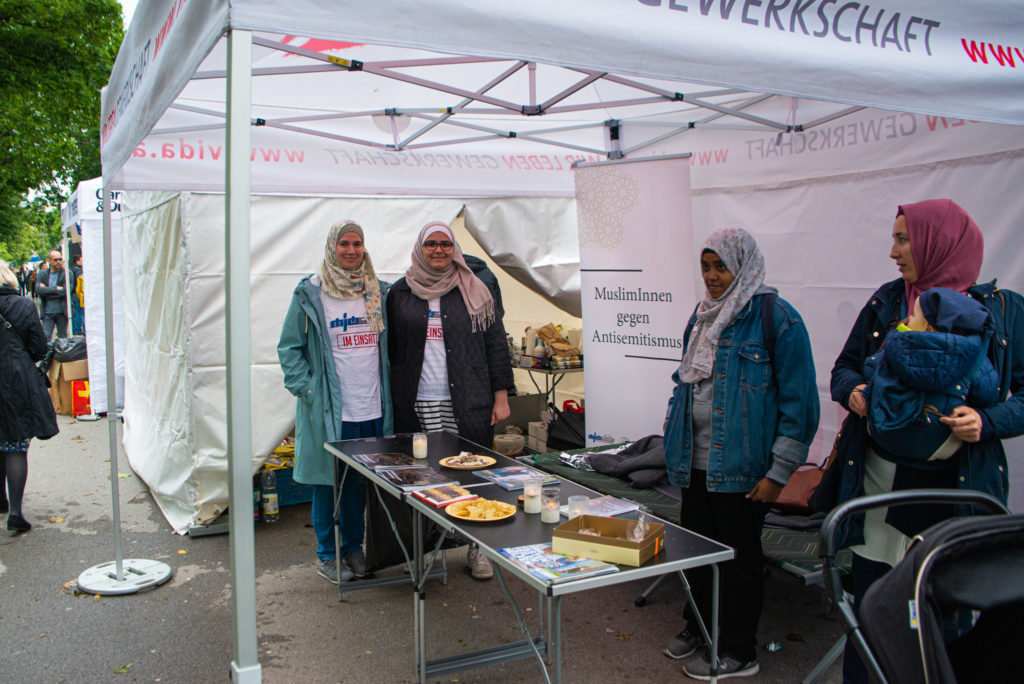
The portraits now are as scarred as the city. But what is a scar? It’s something that mends together which hate, violence, fear and terror has ripped apart. A scar is a symbol of growth. Of: love conquers everything.
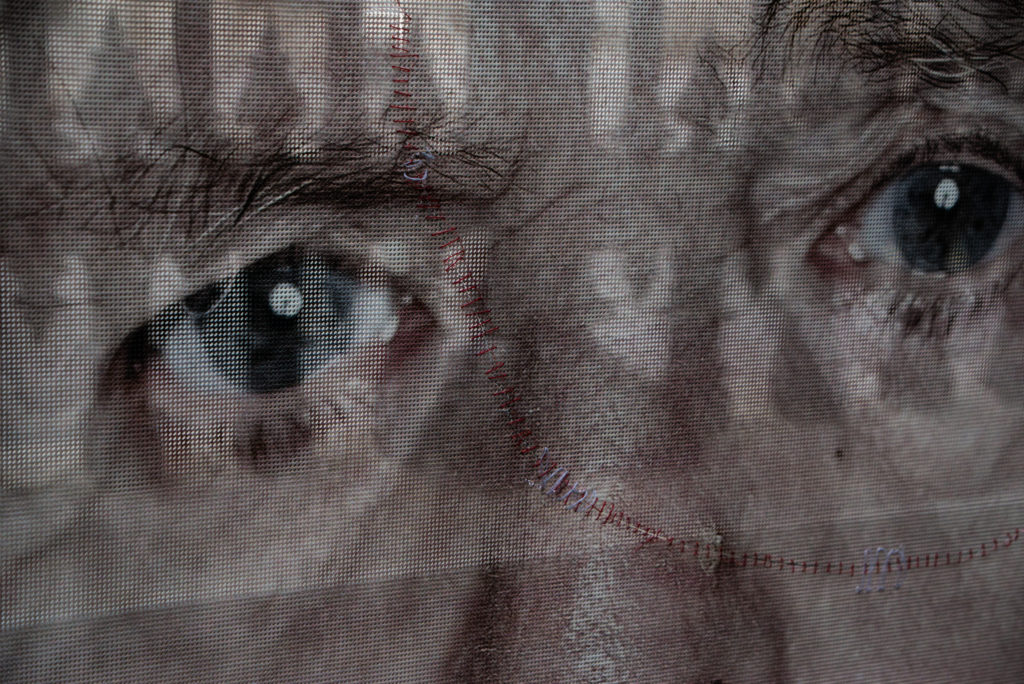
Vienna has many faces. Scarred faces, beautiful faces.

